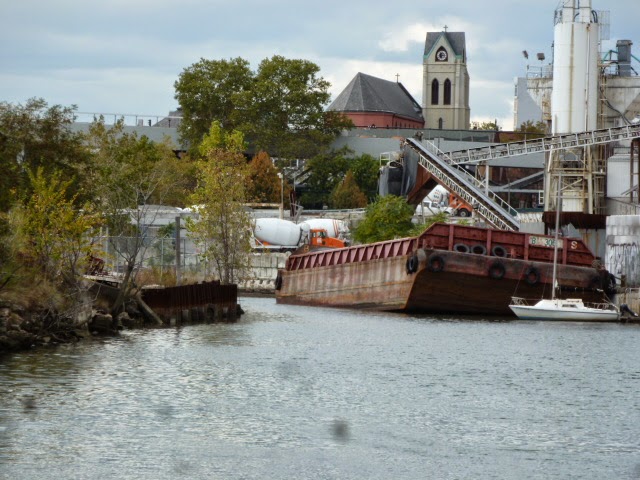In the space of a week, the calendar has changed
from late May to early June. On the
other hand, the weather seems to have changed from mid-August to early
April. Last week it was hot and humid. This week, it’s been chilly, windy and
wet: In fact, we had the sort of
flooding rains one normally associates with the beginning of Spring in many
parts of this country.
Today, though, was sunny and dry—and windy and
cool. It was all fine with me as I took
an afternoon ride down to the Canarsie Pier and along the coast to Coney
Island, under the Verrazano-Narrows Bridge and up “Hipster Hook” back to my
place.
I saw a pretty fair number of cyclists, especially
for a weekday. I guess they all felt as
I did about the weather. Even more
interestingly, I saw a lot of fishermen.
It seemed that everywhere along the shore—in Canarsie and Marine Park,
on the Coney Island Pier and the Verrazano Narrows promenade—poles were propped
against railings and lines cast into the water.
I have seen similar days on which no one was
fishing, and other more inclement days when, it seemed, every male over the age
of ten who didn’t have to be somewhere else (and a few who did, I’m sure) was
casting, trolling or reeling.
Now, I’ve fished only a few times in my life.
Every time, I’ve gone with others—relatives, usually—who were far more
dedicated to it than I have ever been.
They decided when and where we fished.
I’m guessing it had to do with their work schedules and other things in
their lives. But now I also wonder
whether they knew about some condition or another that made for good
fishing. Were they watching the weather
or current patterns? Or did they know,
somehow, that bluefish or whatever kind of fish were out and about?
You may have noticed that I used male pronouns to
talk about those who fish. Fact is, nearly
everyone I’ve seen with a rod and reel—and every one of the relatives I
mentioned-- has been a man or boy. I
think I’ve seen two or three women fishing during my entire life, and no girl
who wasn’t old enough to vote.
And all of my (admittedly limited) angling
experience came when I was still living as male. Now, I don’t think it had anything to do with
my maleness or femaleness. Rather, I
think it was a matter of circumstance:
When I was younger, my uncles used to fish—sometimes on-shore, other times
on party boats. They invited me and my
brothers, and I went along.
None of my uncles were cyclists. Two of my brothers ride occasionally—and they
fish, usually with male friends and in-laws.















